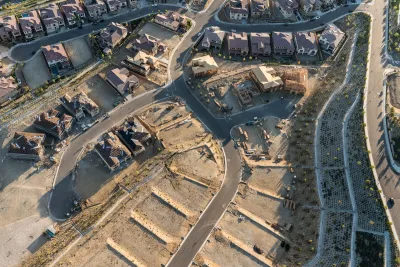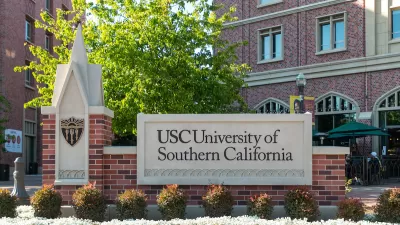Project Recovery offers a roadmap for rebuilding more sustainable and climate-resilient communities after wildfires and other disasters.

A report from the Urban Land Institute, UCLA, and USC offers guidelines for more resilient, sustainable rebuilding in the wake of the Los Angeles wildfires. The project includes “in-depth technical analysis and actionable recommendations to accelerate recovery and build long-term resilience in communities.”
The researchers identified roadblocks to recovery and strategies for resolving issues. These include standardizing debris removal, streamlining the permitting process, stabilizing the property insurance market, and focusing on increased preparedness and resilience in rebuilt infrastructure.
The report elevates the need to account for long-term climate adaptation in rebuilding plans. “Strategies identified in the report include prioritizing inclusive community engagement, accounting for post-disaster emotional stress in recovery and resilience planning, and incorporating wildfire-resilient vegetation and land-use management practices.”
Stuart Gabriel, director of the UCLA Ziman Center for Real Estate, said the project is intended to offer “ongoing relevance” as a framework for how to respond to similar events in the future.
FULL STORY: Urban Land Institute, UCLA, USC Release Comprehensive Roadmap for Post-Wildfire Rebuilding in Los Angeles

Manufactured Crisis: Losing the Nation’s Largest Source of Unsubsidized Affordable Housing
Manufactured housing communities have long been an affordable housing option for millions of people living in the U.S., but that affordability is disappearing rapidly. How did we get here?

Americans May Be Stuck — But Why?
Americans are moving a lot less than they once did, and that is a problem. While Yoni Applebaum, in his highly-publicized article Stuck, gets the reasons badly wrong, it's still important to ask: why are we moving so much less than before?

Research Shows More Roads = More Driving
A national study shows, once again, that increasing road supply induces additional vehicle travel, particularly over the long run.

Judge Halts Enforcement of Anti-Homeless Laws in Grants Pass
The Oregon city will be barred from enforcing two ordinances that prosecute unhoused residents until it increases capacity and accessibility at designated camping sites.

Advancing Sustainability in Los Angeles County Schools
The Los Angeles County Office of Education’s Green Schools Symposium brings together educators, students, and experts to advance sustainability in schools through innovative design, climate resilience strategies, and collaborative learning.

Using Old Oil and Gas Wells for Green Energy Storage
Penn State researchers have found that repurposing abandoned oil and gas wells for geothermal-assisted compressed-air energy storage can boost efficiency, reduce environmental risks, and support clean energy and job transitions.
Urban Design for Planners 1: Software Tools
This six-course series explores essential urban design concepts using open source software and equips planners with the tools they need to participate fully in the urban design process.
Planning for Universal Design
Learn the tools for implementing Universal Design in planning regulations.
City of Moreno Valley
Institute for Housing and Urban Development Studies (IHS)
City of Grandview
Harvard GSD Executive Education
NYU Wagner Graduate School of Public Service
City of Cambridge, Maryland
Newport County Development Council: Connect Greater Newport





























